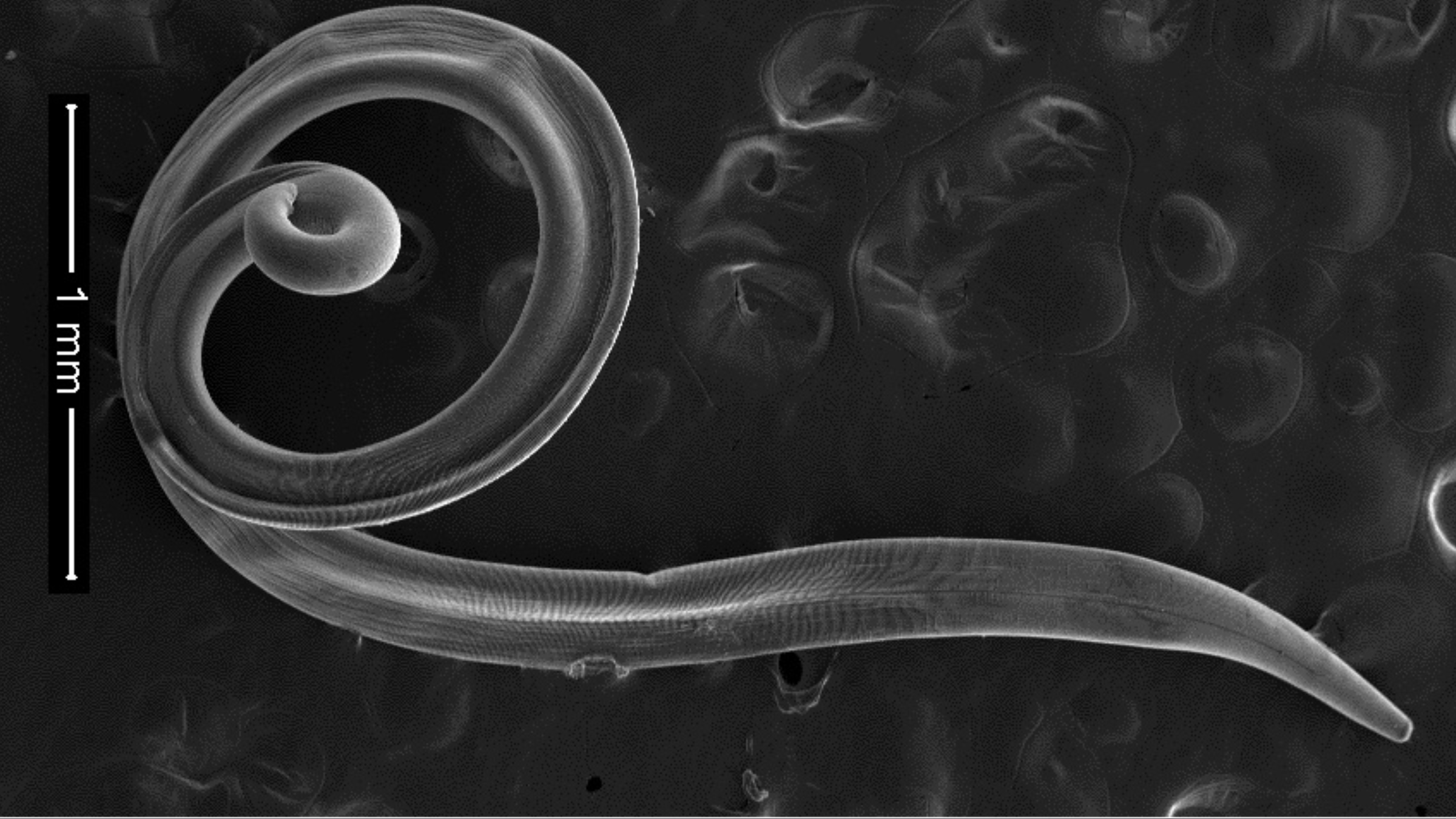
In a rare medical case, parasitic worms grew underneath a woman's upper eyelid.
The woman, who was 41 and lived in Beijing, went to the hospital in June 2022 after feeling like she had something in her right eye. Upon examining the eye, doctors noticed that its outer surface, the cornea, appeared damaged. They prescribed the patient eye drops to help protect the eye from further irritation and reduce the risk of infection, before sending her on her way.
However, a month later, the woman went back to the hospital because her eye had grown red and itchy and she could still feel something in there. When doctors reexamined her eye, they saw that the tissue below her upper eyelid was red, inflamed and larger than it should have been. That was when they made a startling discovery: Four live, white worms were wriggling around under the woman's eyelid.
After applying an anesthetic to the area, the team used forceps to carefully remove the worms from the woman's eye and sent the samples to the laboratory for analysis. Under the microscope, the team saw that the worms had slender, elongated bodies that were covered in what looked like minuscule cut marks. There was a mouth-like structure on one end of each body, and the other end was spiky.
Related: Parasite that lived in woman's eye for 2 years likely came from crocodile meat
Subsequent genetic testing revealed that the worms belonged to a species called Thelazia callipaeda, otherwise known as the Oriental eye worm. These worms are the main species responsible for causing a parasitic disease called thelaziasis.
Thelaziasis is typically transmitted to animals by flies that feed on the tears of cattle and domestic animals, such as dogs and cats; as they feed, the flies release T. callipaeda larvae into the animals' eyes. Once inside an eye, the larvae develop into adult worms that reproduce, creating new larvae that are ready to be ingested and transmitted by another fly, thus continuing the transmission cycle.
T. callipaeda infections have been reported in animals across Asia and continental Europe. In North America, thelaziasis infections can be caused by similar parasitic species, such as the California eye worm (Thelazia californiensis) and the cattle eyeworm (Thelazia gulosa).


Humans can also catch thelaziasis, but this is rare. The disease is most common among people living in agricultural areas or in close proximity to domestic animals. Globally, China has reported the greatest number of human thelaziasis infections — 653 cases reported between 1917 and 2018.
Symptoms of thelaziasis in humans include itchiness and swelling of the eye, as well as excessive tear formation, ulcer development in the eye and, in severe cases, blindness.
Doctors are not certain how the woman in China ended up with worms in her eye, especially because she was an office worker and couldn't recall recent contact with flies. However, the woman did have an American shorthair cat that had an "eye disease," according to a report of her case, published Nov. 27 in the journal BMC Ophthalmology. Because she refused to allow her pet to be examined, though, no conclusions about the exact source of her infection could be drawn.
After the worms were successfully removed from the woman's eye, she was given an eye ointment to use daily, which contained an antibiotic, likely to prevent any follow-up bacterial infections. Within a week, her symptoms had improved significantly, and two months later, the infection seemed to have resolved.
Ever wonder why some people build muscle more easily than others or why freckles come out in the sun? Send us your questions about how the human body works to community@livescience.com with the subject line "Health Desk Q," and you may see your question answered on the website!







